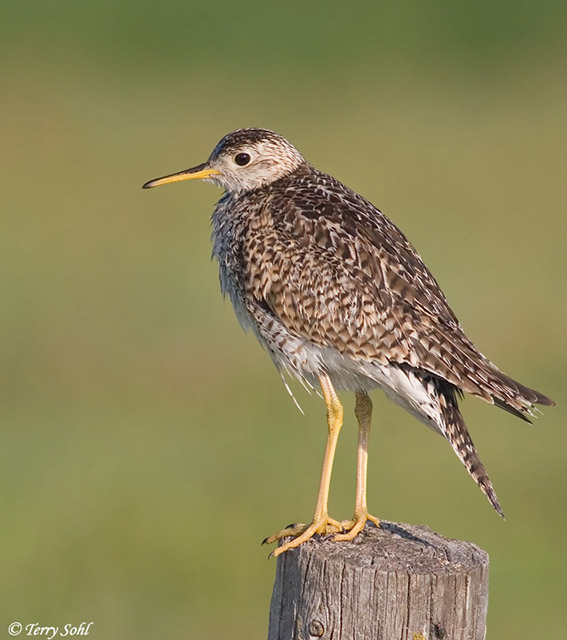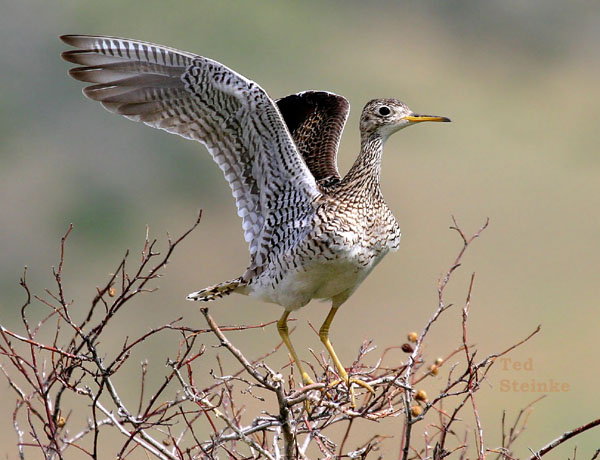Upland Sandpiper
Prairie Runner ( Bartramia longicauda )
The Prairie Runner ( Bartramia longicauda ) is a North American species of the family of the Waders. Genus and species are monotypic. In Europe, the prairie runner is a rare exception Guest, is observed mainly in the UK and Ireland relatively regularly. The scientific name of the monotypic genus honors the American naturalist William Bartram.
Appearance
The prairie runner reaches a body length of 26-32 inches and weighs 98-226 grams. In relation to the body size of the head looks small. The straight and thin beak is long and about head slightly bent downward toward the tip. The eyes are large and dark. The face is pale beige and as the cream-colored throat without drawing. The sides of the neck and the neck are fine brown dashed lines, the front chest has teardrop-shaped spots on. The belly and under tail-coverts are pale cream color. The back and wing-coverts are brown with a dark banding and cream-colored feather tips. The tail is dark brown and white banded.
Prairie runners are good flyers and are characterized by powerful wing beats. Just landed prairie runners often hold after landing her wings vertically into the air.
Area of distribution and habitat
The breeding grounds of the prairie runner extends from northwest Alaska, the Yukon and British Columbia south to Oregon and from there across the Great Plains and the Great Lakes as far as West Virginia and Maryland. The wintering areas are found in South America, extending from southern Brazil to southern Argentina and Chile. The departure from the breeding grounds begins in August / September. The first wintering birds meet in the South American pampas already the end of September. Stragglers observed in North America until November. The return migration begins in early March. Usually prairie runners reach their breeding grounds in April and again in the north of its range in May.
The prairie runner breeds on kurzrasigem grasslands, in prairies and grassy moors. Johnsgard indicates that the Prärielälufer as the American Bar-tailed Godwit is an indicator species of original prairie landscape. He makes great demands on its breeding habitat, which must include at least 150 acres.
During the migration period the prairie runner is found in savannas and in open fields and on Pampas and is frequently observed also at airports and golf courses.
Way of life
The prairie runner is diurnal and crepuscular. Much like a plover it is running short distances very quickly, then suddenly stops and starts to peck. The diet consists mainly of insects. Here, grasshoppers, crickets and weevils, and various beetle larvae play an important role. He also eats spiders, snails and earthworms. Most prey animals are collected at the surface.
Prairie runners are already mated normally, when they arrive at their breeding grounds. The nest is a depression in the ground, which is padded with dry plant material. The nest consists usually of four eggs. These have a cream to pink beige shell. The incubation period is 24 days and both parents birds nest. The young birds are out 32 to 34 days.









